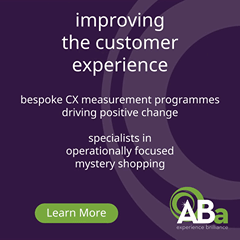Gen Z POV: In-the-Trenches Insights From Retail’s Next-Gen Workforce
Guest post from Elizabeth Lee, Logile: Picture this. It’s 2015 and you open the door to your early 2000s sedan. You start the ignition and drive out of your high school parking lot to your part-time retail job…
You walk into the building, swipe your employee ID card on the ancient 1990s computer and watch the loading screen simulator as you wait to clock in. After approximately three minutes of waiting for the screen to load, you walk into the back room and spend another five minutes looking at the bulletin board. Before every shift you are required to memorize your shift’s KPIs/target goals.
This was a typical start to any shift of mine when I was working in retail. Retail jobs are very common within Gen Zers like me. In fact, research shows that by 2020 Gen Z will account for 24 percent of the global workforce. This is a huge percentage of the working population. Therefore, it is imperative that retailers transition their stores to create an environment that is geared towards Gen Z. But before diving into this, it’s important to understand the habits and character traits of Gen Z.
So, who is Gen Z?
To be considered a member of Gen Z, you were born within the years 1995-2012. Gen Z is the descendant of the Millennial generation. Though there are parallels between the two generations, there are also clear differences. Millennials are credited as the first digital generation. However, Gen Zers are true “digital natives.” Gen Zers were born into the world of the internet and have an innate ability to quickly learn and utilize new technology. With this, members of Gen Z often use technology as a mode for communication. In this generation there is a huge emphasis on open lines for communication. Gen Zers appreciate online communities because it allows them to interact with people from all backgrounds and walks of life. In addition, members of Gen Z were born and raised during times of uncertainty. Many Gen Zers lived through 9/11, the 2008 recession and now COVID-19. With this, Gen Zers strive for financial stability through planning ahead. So, how does all this information relate to a retail environment?
Adhere to the nature of “digital natives”
While working in retail, one thing that really stood out to me was the underutilization of current technology. Not only were our computer systems extremely outdated, but we constantly performed tasks manually when we could have handled them digitally. For example, say a customer was looking for something but couldn’t find it on the sales floor. If I were also unable to find the item, I would have to walk to the back room and check to see if we had any in inventory. This would often take anywhere from 5-10 minutes. However, this could easily have been done using a digital inventory tracker. Instead of walking back and forth, an employee could simply look up the item’s UPC on a tablet and check if the item was still in stock. This would take a fraction of the time the original process took. Not only would this be easier for the employee, but it would also create a more pleasant shopping experience for the customer.
Open lines for communication
One of the biggest areas of improvement I noticed while working in retail was a need for a more efficient communication system. Information was not efficiently distributed to employees. As described earlier, KPIs/weekly target goals were posted on the employee bulletin board. On top of this, schedules were sent a week prior to the scheduled date through a mass group chat. My manager would often mix up my availability and schedule me during shifts I was unable to work. In this scenario, I would look at the schedule and try to find an alternative shift that I could work. From there, I would ask my manager for the numbers of the employees who had these shifts so that I could text and ask them if we could trade. As you could imagine, it was an extremely inefficient process.
A solution to this is utilizing an app which would serve as a virtual employee portal. With an app, management could upload a digital schedule that stated each shift’s KPIs. This way employees could just focus on their task work ahead instead of using some of the time during their shift to review this information. In addition, employees could update their availability through the app, which would alert management on which days/time employees are available. If employees had a scheduling conflict, they could go to the app, look at the schedule and then directly message another employee about a possible shift trade. This avoids the need for management’s involvement and makes the process much easier.
Planning ahead
Like many Gen Zers, I like to plan ahead. However, while working in retail I found it difficult to organize my schedule. I was given my work assignments only a week in advance, which often created scheduling conflicts for plans I had already made. In addition, sometimes I was called into work randomly because they needed an extra hand. This is a pretty common practice within the retail industry. So common, in fact, that many Gen Zers have expressed their concern for this to their local government. In recent years, states have implemented “Predictable Shift Laws.” These laws require employers to post their employee schedules at least a week and a half to two weeks (depending on the state) in advance. To create a predictive schedule, retailers can utilize forecasting to ensure that proper support is given to each shift. Forecasting involves predicting the projected sales for a specific date by looking at previous sales volume data. This allows for a more accurate predictive schedule to be made.
In summary
Although this blog post was focused through the eyes of a Gen Zer, the opportunities and solutions discussed can benefit all employees. In a subsequent post, a panel of my peers will discuss how to optimize these solutions and implement them in a way to foster success for all employees. Not only will these solutions provide a more productive work environment, but it will also create a more positive and pleasant shopping experience for customers.
About Logile
Logile, Inc. delivers industry-leading retail solutions for in-store planning, execution and workforce management. Our proven AI and machine-learning technology and industrial engineering expertise help retailers worldwide provide the best customer service at the optimal cost. Labor standards, forecasting, scheduling, time and attendance, food safety, task management—we transform store operations.
- Never lost a customer
- The only workforce management company on RIS News’ Top-20 Best Retail Vendor list for multiple years
- 100% dedicated to each customer’s success
To find out how Logile can help you, click here














